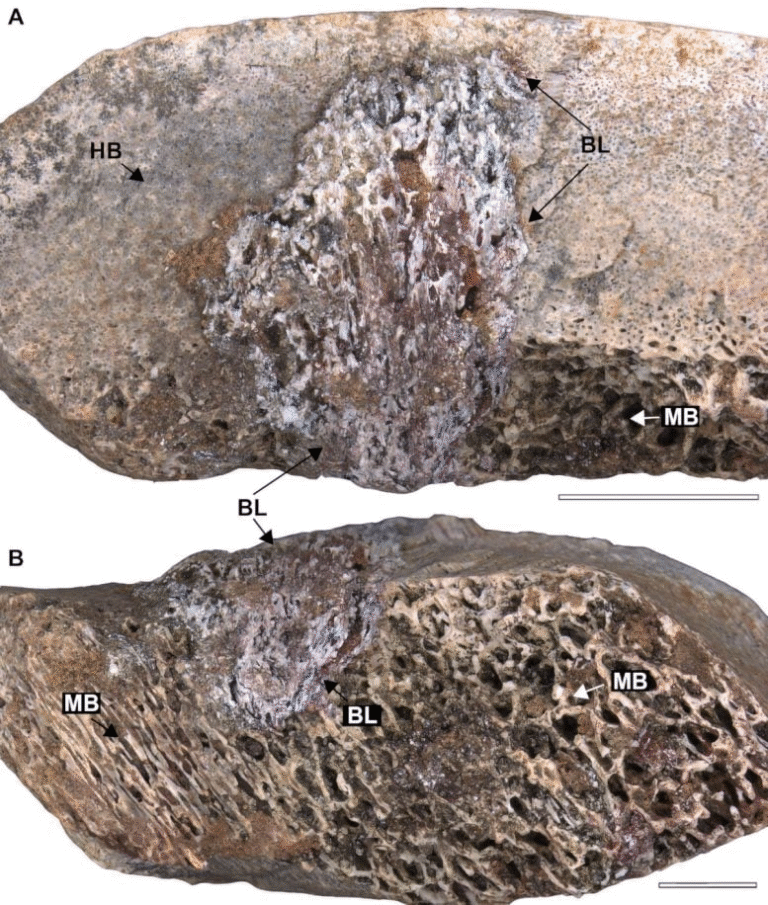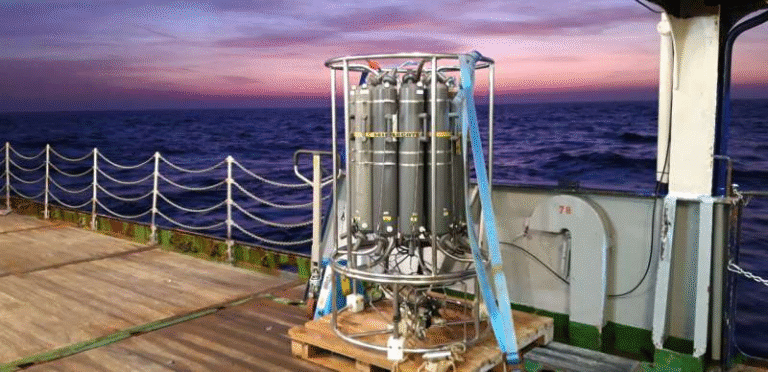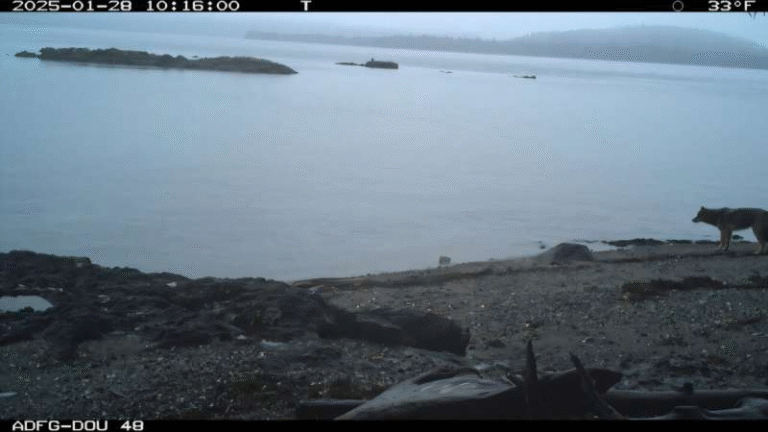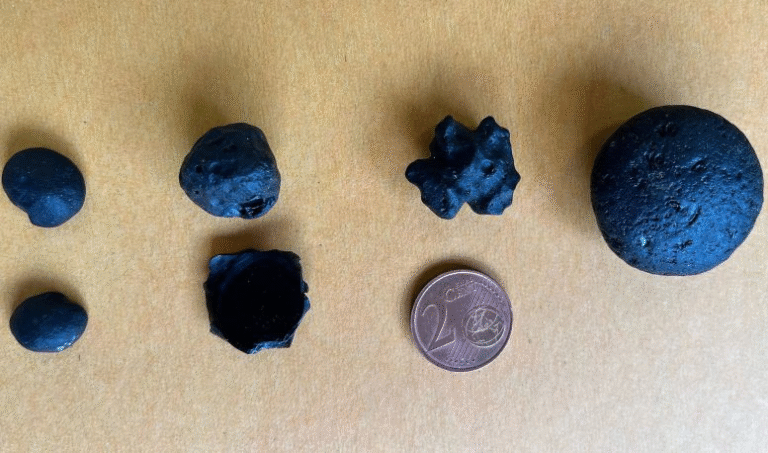The 540-Million-Year-Old Mystery Fossil That’s Rewriting the Story of Skeletons

A new study has taken a closer look at one of the strangest fossils from the early Cambrian Period — a small, cone-shaped creature called Salterella — and the results are shaking up how scientists understand the origins of animal skeletons.
Researchers have now placed this ancient organism, which lived around 540 million years ago, into a familiar but surprising group: the cnidarians, a lineage that includes modern jellyfish, corals, and sea anemones. This finding not only clarifies Salterella’s evolutionary identity but also provides new insights into how animals first developed shells and skeletons during one of the most crucial chapters in life’s history — the Cambrian Explosion.
What Exactly Is Salterella?
Salterella was a tiny, conical marine organism that thrived during the early Cambrian Period (around 538–506 million years ago). Its fossils are so common in Cambrian rock layers that paleontologists use them as index fossils to date geological formations. Despite its abundance, Salterella’s classification has long been debated.
For decades, scientists couldn’t agree on what kind of creature it was. It was variously grouped with squids and octopuses, then sea slugs, jellyfish ancestors, worms, and finally, in the 1970s, given its own category along with a similar fossil called Volborthella. Together, they were placed in a mysterious extinct group called Agmata, isolated from the rest of the animal kingdom.
But now, new research led by Prescott J. Vayda at Virginia Tech, in collaboration with scientists from Johns Hopkins University, Dartmouth College, the University of Missouri, and the Denver Museum of Nature and Science, has finally given Salterella a home in the tree of life.
The Double-Skeleton Oddity
Salterella stands out because of its unique way of building its skeleton. Most animals, even during the Cambrian, used one of two approaches:
- Biomineralization — building mineral tissues on an organic framework (like human bones and teeth).
- Agglutination — collecting and cementing mineral grains from the surrounding sediment to form an external structure.
Salterella broke this rule. It had a conical shell made from calcite, and inside that shell, it packed a carefully selected mixture of minerals — an unusual “double shell” structure that’s rarely seen in any other animal. This internal filling wasn’t random: the tiny organism chose specific minerals to line the interior, indicating a high level of biological control.
Quartz was acceptable, clays were avoided, and titanium grains were apparently prized. This selective behavior suggests Salterella had appendages or mechanisms for picking up grains — a sign that it wasn’t just a passive creature but actively manipulated its surroundings to build its home.
This dual structure is what makes Salterella so interesting. It seems to have combined biomineralization and agglutination, blending two evolutionary strategies into one body plan.
How the Study Was Done
The study, published in the Journal of Paleontology on October 13, 2025, examined dozens of Salterella and Volborthella fossils from several well-known Cambrian fossil sites:
- Nevada (USA) – Wood Canyon and Harkless formations
- Yukon (Canada) – Illtyd Formation
- Virginia (USA) – Shady Formation
The team used advanced imaging and analytical techniques to study the fossils in fine detail, including:
- Thin-section petrography to examine microscopic structures
- Scanning electron microscopy (SEM)
- Energy dispersive X-ray spectroscopy (EDS) for elemental composition
- X-ray diffraction (XRD) to identify minerals
- X-ray tomographic microscopy for 3D visualization
These analyses revealed that Volborthella, an older relative, built its cone entirely from agglutinated sediment grains without any biomineralized shell. Salterella, however, took this a step further by adding a calcite shell over an agglutinated inner layer.
This evolutionary sequence — Volborthella first, Salterella later — suggests a gradual transition from agglutinated to biomineralized skeletons, marking one of the earliest known examples of such innovation.
Why This Discovery Matters
1. Redefining Early Skeleton Evolution
The early Cambrian was the “Age of Skeletons”, a time when animals first started developing hard shells and bones. These structures were game-changers: they offered protection, structural support, and new ecological possibilities.
By showing that Salterella combined two shell-building methods, the study suggests that early animals were experimenting with skeletal strategies far more creatively than previously thought. It challenges the long-standing assumption that organisms simply chose one method or the other.
2. A New Place on the Tree of Life
The research team’s detailed comparisons of morphology, ecology, and mineral structure led them to reclassify both Salterella and Volborthella as early cnidarians. This means they were distant relatives of modern corals and jellyfish, not isolated oddballs in evolutionary history.
That’s a major shift. It implies that cnidarians — a group we often think of as soft-bodied — were experimenting with hard, mineralized shells much earlier than anyone realized.
3. Insights into Early Marine Ecosystems
Based on fossil evidence, Salterella likely lived as a semi-infaunal organism, meaning it was partially buried in sediment, possibly using its shell as an anchor. Its dual-layer construction might have provided weight or stability while it fed on small particles in the water or sediment — making it a filter or deposit feeder.
By reconstructing its lifestyle, scientists gain a clearer picture of Cambrian seafloor communities, showing how even small, cone-shaped creatures contributed to early marine ecosystems.
The Bigger Picture: The Cambrian Explosion
To understand why Salterella matters, it helps to look at the Cambrian Explosion — a period around 541 million years ago when life diversified dramatically. Almost every major animal group appeared in a geologically brief window, leading to new body plans, behaviors, and ecosystems.
One hallmark of this explosion was the rise of biomineralization — animals developing shells, skeletons, and other hard parts. This innovation not only protected them from predators but also changed the chemistry of the oceans by locking minerals like calcium carbonate into biological structures.
Salterella’s hybrid skeleton shows that evolutionary experimentation during this time was complex. Some organisms built shells from scratch; others, like Salterella, combined natural sediment with self-secreted minerals, bridging the gap between soft-bodied and fully skeletonized animals.
How the Findings Were Interpreted
The study’s detailed analysis of shell microstructures, mineral composition, and grain selectivity led to several conclusions:
- The calcitic shell of Salterella shows a blocky prismatic microstructure, indicating controlled biomineralization, not just random mineral accumulation.
- The inner agglutinated layer contains grains that differ in composition from the surrounding sediment, proving selective grain choice.
- Morphological measurements, such as aperture angles and tube diameters, are consistent between Salterella and Volborthella, confirming their close relationship.
- The combination of features matches what is seen in cnidarians, rather than mollusks or worms.
Together, this evidence points to cnidarian affinity, meaning Salterella and Volborthella are now best understood as ancient relatives of corals and jellyfish rather than members of a strange, lost phylum.
Implications for Evolutionary Biology
This new placement has significant consequences:
- It extends the evolutionary history of cnidarians into the early Cambrian, showing that they may have been among the first skeleton-building animals.
- It supports the idea that biomineralization evolved multiple times independently across different lineages.
- It provides a possible intermediate stage between organisms that only glued sediment together (like Volborthella) and those that grew mineral shells internally (like mollusks and brachiopods).
It also forces scientists to rethink why biomineralization took hold. Was it driven by ecological pressures, like predation? Or did it evolve because certain environments were mineral-rich, encouraging skeletal innovation? Studies like this one help piece together those clues.
What Remains Unknown
Even with these discoveries, some mysteries remain. Salterella’s soft tissues have never been preserved, so its anatomy and feeding structures are still inferred from its shell. Scientists can’t yet confirm how it moved, fed, or reproduced.
Another puzzle is why hybrid strategies like Salterella’s didn’t persist. Over time, evolution seems to have favored simpler skeletal systems — either purely biomineralized or purely agglutinated. Understanding why these “dual” systems disappeared could reveal more about how early animals adapted to their environments.
There’s also the broader question of whether other Cambrian fossils once thought unrelated might share similar traits. As imaging and geochemical methods improve, more examples of complex skeleton-building strategies may come to light.
What This Means for Paleontology
By resolving Salterella’s identity, scientists can now reclassify numerous fossil layers and better understand the timing of evolutionary milestones. Fossils like this serve as time markers in Earth’s geological record, helping researchers piece together how ecosystems evolved.
The study also showcases the power of modern analytical tools — combining chemistry, microscopy, and 3D imaging — to reinterpret fossils that have puzzled scientists for more than a century.
Ultimately, Salterella and its cousin Volborthella highlight an important truth about evolution: it’s not a straight line but a web of experiments, successes, and dead ends. And sometimes, even a 540-million-year-old cone can reveal just how inventive nature has always been.
Research Reference
“A Cnidarian affinity for Salterella and Volborthella: implications for the evolution of shells”
By Prescott J. Vayda, Shuhai Xiao, Noah D. Keller, Amy P. I. Hagen, Justin V. Strauss, James W. Hagadorn, Mary C. Lonsdale, Tara Selly, and James D. Schiffbauer
Published: 13 October 2025, Journal of Paleontology
Read the full paper here





